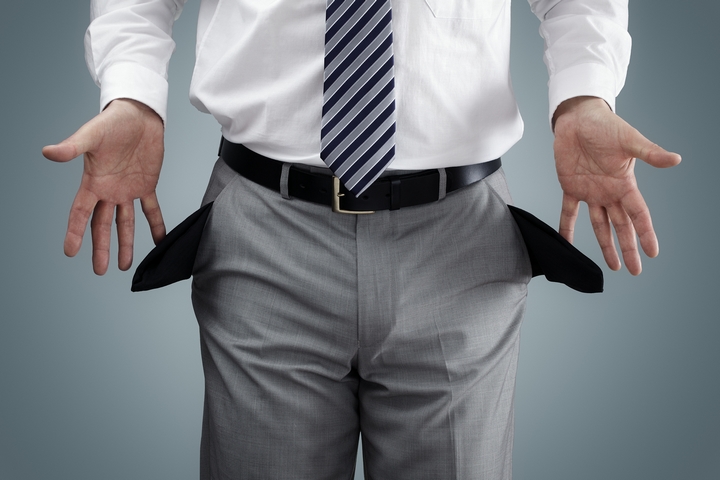There is a solution if you are heavy in debts and have little hope to pay them off in the near future. There are specialized lawyers who can help you navigate the different bankruptcy requirements and file for personal bankruptcy. Do not worry if you have to seek help with a debt solution as this can get you out off a tight situation, remove the stress, and fear you may be experiencing.
Before you decide to consider this option, make sure you really cannot pay your debts within a reasonable time because it can affect different areas of your life such as buying a home or requesting for a line of credit. It will remain on your credit history for a number of years before being removed. This is why you have to be absolutely sure it is the only solution to solve your accumulated debt problem.
First, seek advice on whether bankruptcy is the right way to proceed and the appropriate solution for your personal circumstances. Professional lawyers have indicated that bankruptcy is not only for those who are entirely out of money. You can file for bankruptcy if you know that in the coming years you will not be able to pay your bills especially if you are going to be laid off from employment.
Here are some bankruptcy requirements you need to be aware of:
Requirement #1: Analyze your debts
 There are certain debts that are not applicable for bankruptcy. The common one is child support obligations. If you have pledged collateral for a debt, remember that the bank or creditor is authorized to take the assets that you committed against the debt.
There are certain debts that are not applicable for bankruptcy. The common one is child support obligations. If you have pledged collateral for a debt, remember that the bank or creditor is authorized to take the assets that you committed against the debt.
Requirement #2: Seek consultation
 Not sure if you can apply for bankruptcy? Then it is best to seek a professional lawyer to help you in determining your bankruptcy requirements and eligibility. Do not wait until you run out of money. You can consider consulting a specialist when you know you will no longer be able to pay your debts in the near future. It is best to ask the lawyer about the items that are exempted from seizure.
Not sure if you can apply for bankruptcy? Then it is best to seek a professional lawyer to help you in determining your bankruptcy requirements and eligibility. Do not wait until you run out of money. You can consider consulting a specialist when you know you will no longer be able to pay your debts in the near future. It is best to ask the lawyer about the items that are exempted from seizure.
Requirement #3: Eligibility
 You can file for bankruptcy if you owe $1000 and are age 18 and over. However, bankruptcy will take other factors into account such as your gross income and overall expenses before determining whether you qualify for a discharge.
You can file for bankruptcy if you owe $1000 and are age 18 and over. However, bankruptcy will take other factors into account such as your gross income and overall expenses before determining whether you qualify for a discharge.
Requirement #4: When to apply
 Do not make a hasty decision until you are absolutely sure you will not be able to pay off your debts. Ensure to complete the first three steps above before you actually move forward with the bankruptcy declaration.
Do not make a hasty decision until you are absolutely sure you will not be able to pay off your debts. Ensure to complete the first three steps above before you actually move forward with the bankruptcy declaration.
If you have a nerve-racking debt-load and you are avoiding the creditors’ phone calls, it may be time to face the financial fact that you are bankrupt. You do not have to do it alone, as there are lawyers that can work with you to make the process less distressing.
Requirement #5: Choosing debts
 A professional lawyer will work with you determining the debts that can be considered for bankruptcy. Generally, all debts factor into your personal bankruptcy, but there are regular payments that carry through such as child support.
A professional lawyer will work with you determining the debts that can be considered for bankruptcy. Generally, all debts factor into your personal bankruptcy, but there are regular payments that carry through such as child support.
Requirement #6: Losing assets or personal ownership
 In certain provinces within Canada, there are items that are exempted from seizure, which includes personal effects, household goods, motor vehicles and home equity. If you are not aware of the items, consult with the lawyer to be sure. This way you will not lose everything you own.
In certain provinces within Canada, there are items that are exempted from seizure, which includes personal effects, household goods, motor vehicles and home equity. If you are not aware of the items, consult with the lawyer to be sure. This way you will not lose everything you own.
As mentioned earlier, you may have pledged certain assets or even your home against debts. In this case, creditors can take away your belonging. Consult with the lawyer before you proceed with bankruptcy to find a workable solution.
Requirement #7: Process to file for bankruptcy
 There is a process to follow for bankruptcy. You must meet with a Licensed Insolvency Trustee to review your financial situation. This Trustee will advise you of your best option. After this meeting and confirmation, the Trustee will prepare the proper documentation need for signing and submittal.
There is a process to follow for bankruptcy. You must meet with a Licensed Insolvency Trustee to review your financial situation. This Trustee will advise you of your best option. After this meeting and confirmation, the Trustee will prepare the proper documentation need for signing and submittal.
At this stage, the bankruptcy is in effect. The Trustee will be responsible to contact all your creditors to inform them of your official status.
Requirement #8: Responsibilities following bankruptcy
 It does not end at the point of filing for bankruptcy. After you qualified and closed your case with the Trustee, you still have a few steps to follow such as disclosing all your assets and liabilities, attending financial counselling, keeping the trustee informed of changes and attending meeting with the Trustee as requested.
It does not end at the point of filing for bankruptcy. After you qualified and closed your case with the Trustee, you still have a few steps to follow such as disclosing all your assets and liabilities, attending financial counselling, keeping the trustee informed of changes and attending meeting with the Trustee as requested.
Requirement #9: Bankruptcy period
 The good news is that you are relieved from your debt obligations in a few months or a year. You no longer legally required to pay your debts. To achieve this you have to complete all the requirements correctly. This will also prohibit creditors from taking collection action against your debt, including lawsuits, annoying phone calls and demand letters.
The good news is that you are relieved from your debt obligations in a few months or a year. You no longer legally required to pay your debts. To achieve this you have to complete all the requirements correctly. This will also prohibit creditors from taking collection action against your debt, including lawsuits, annoying phone calls and demand letters.

